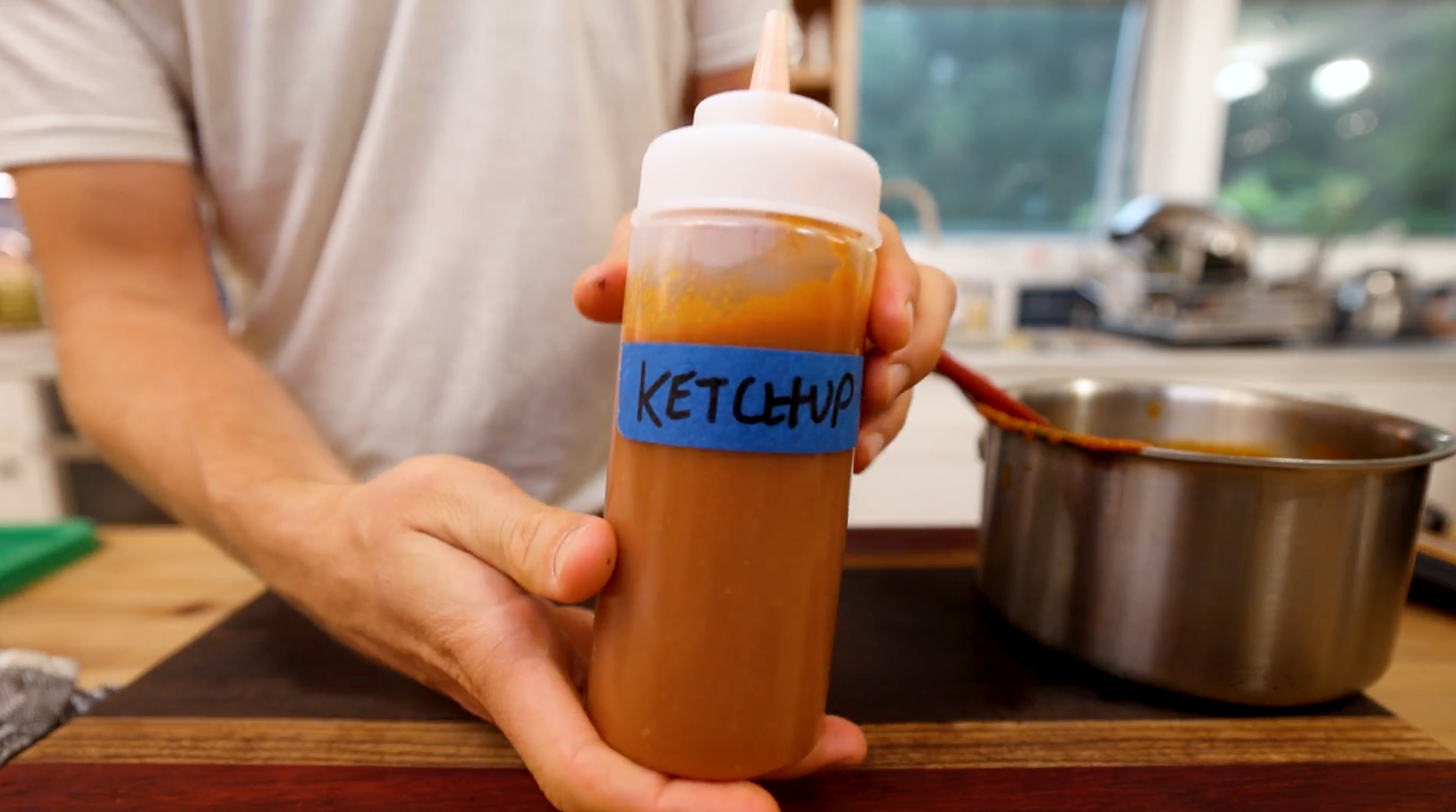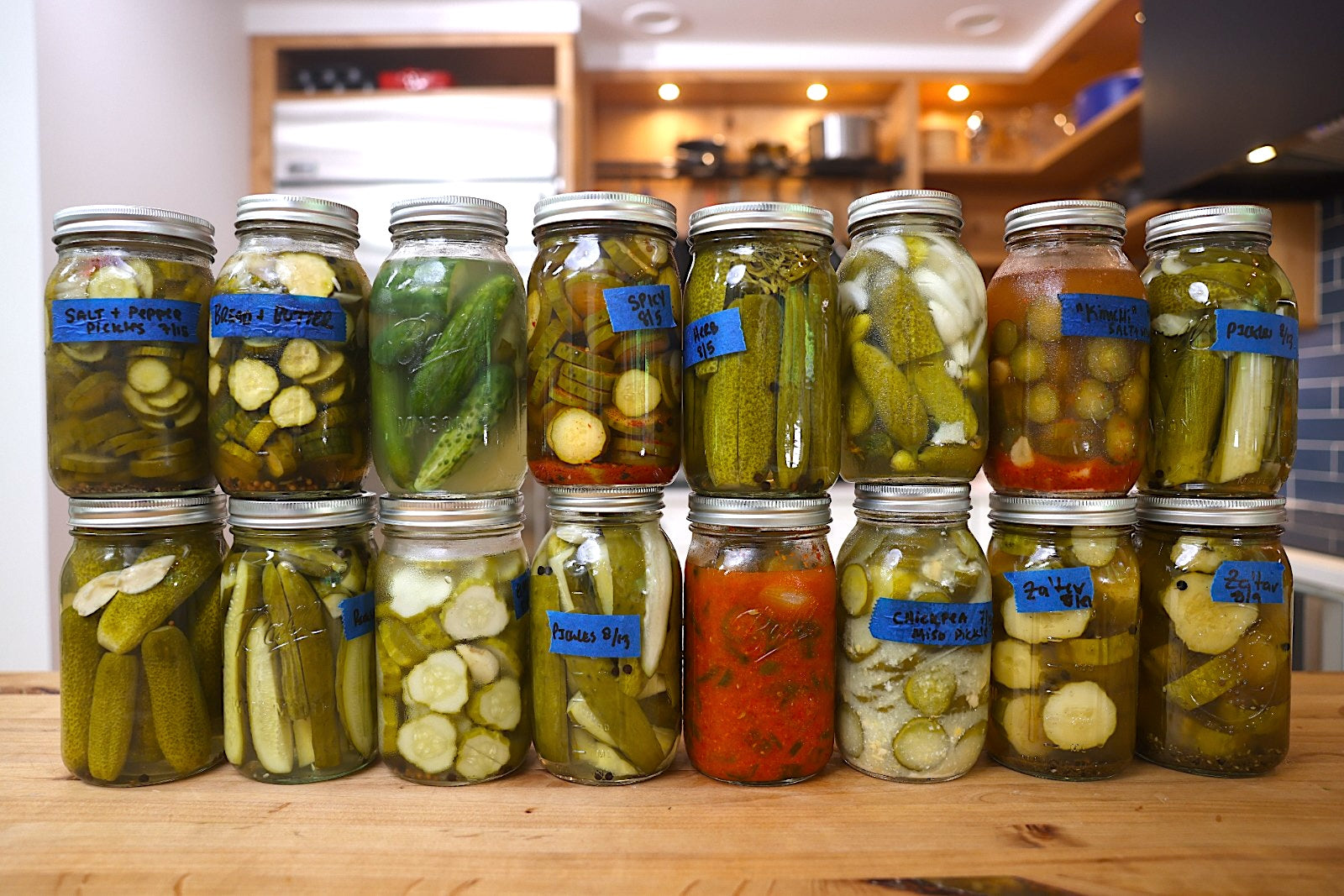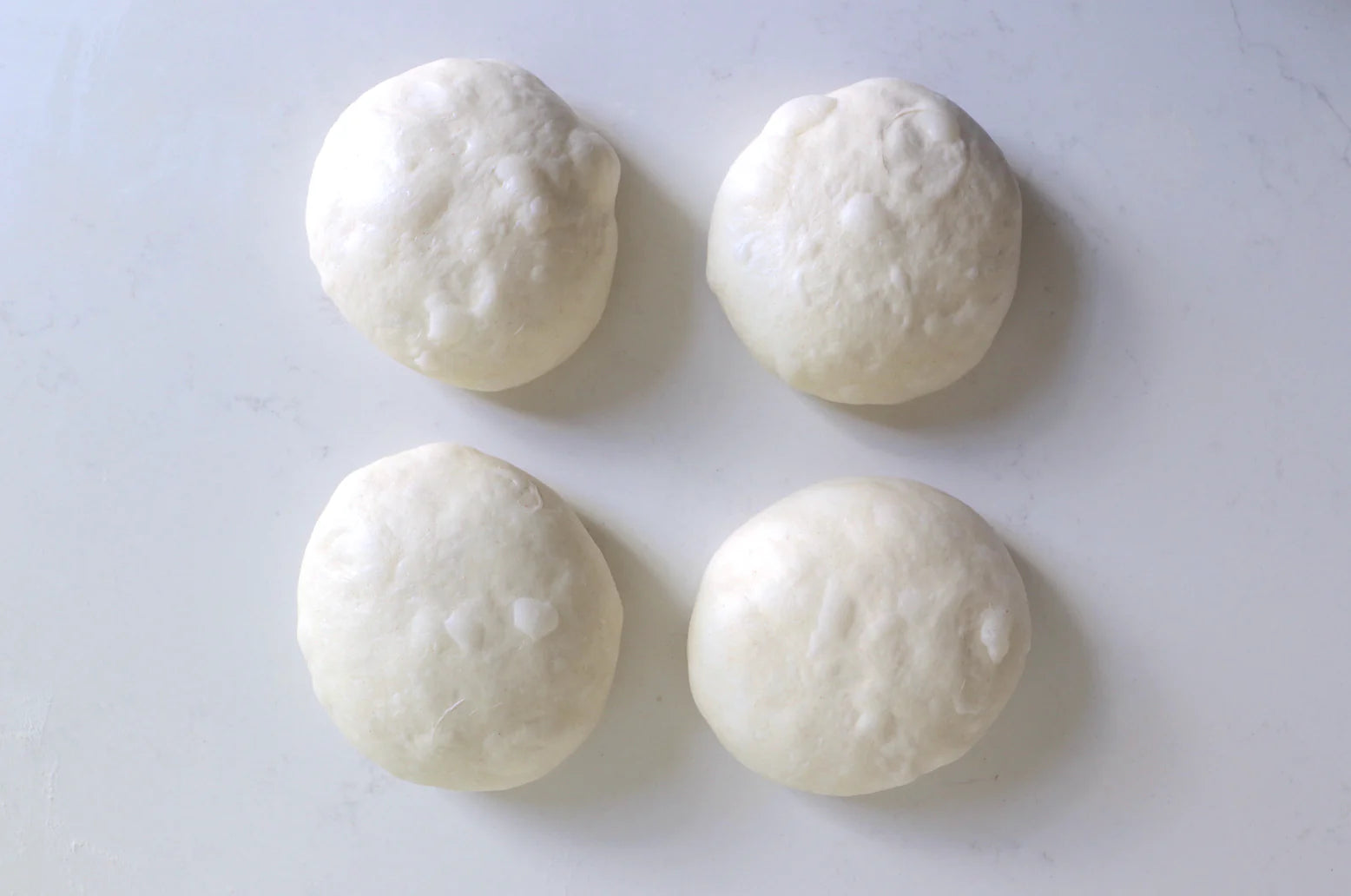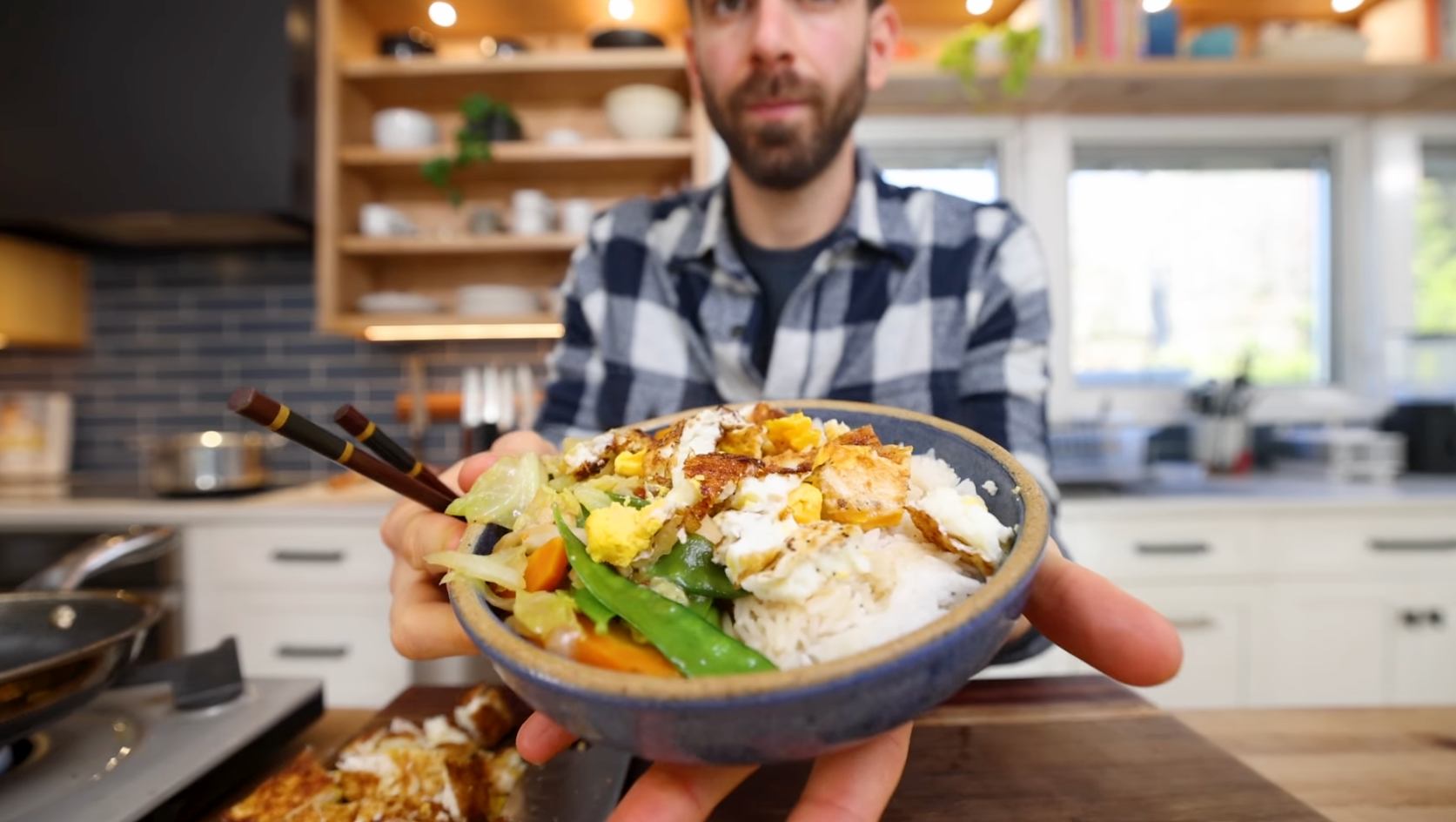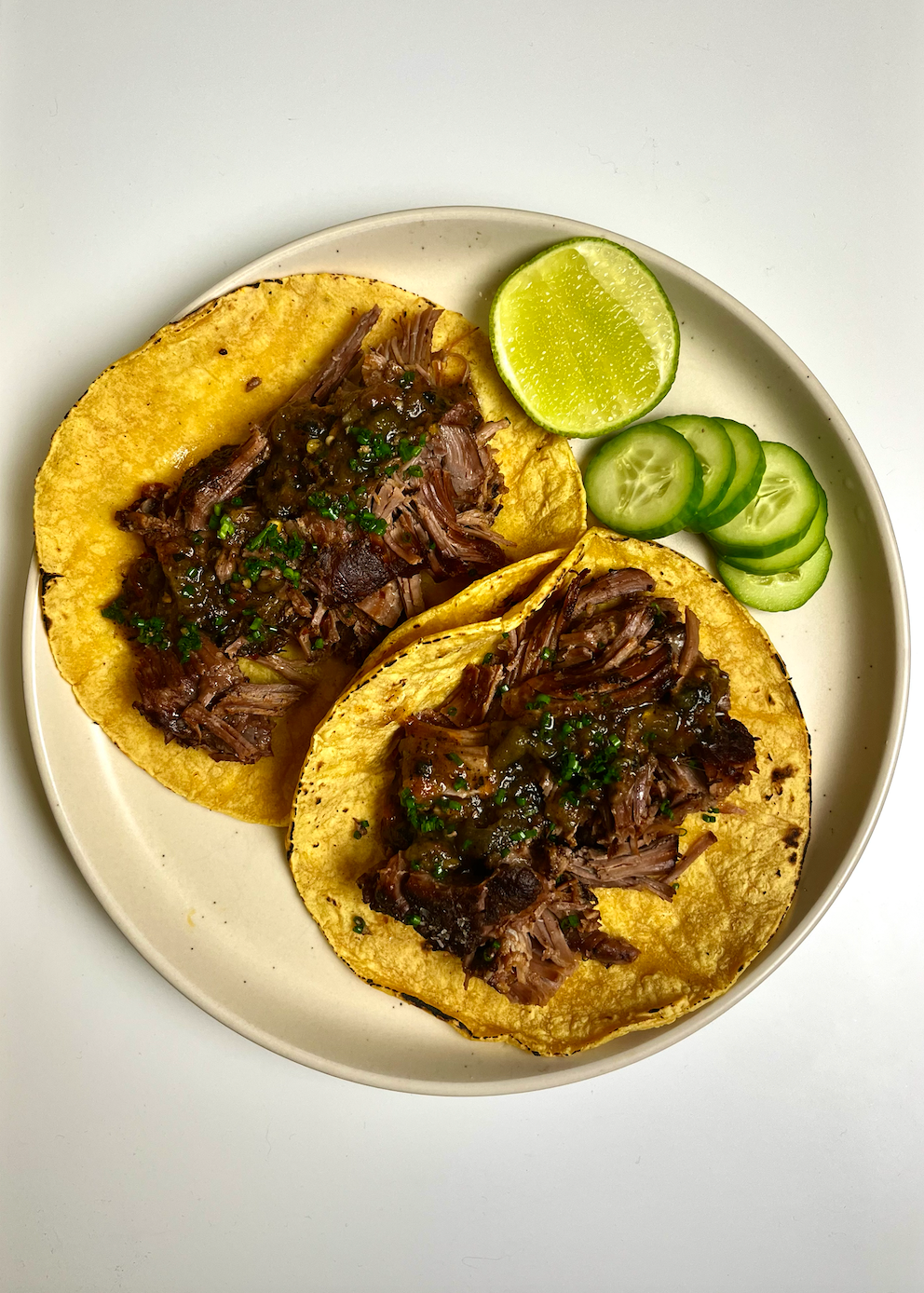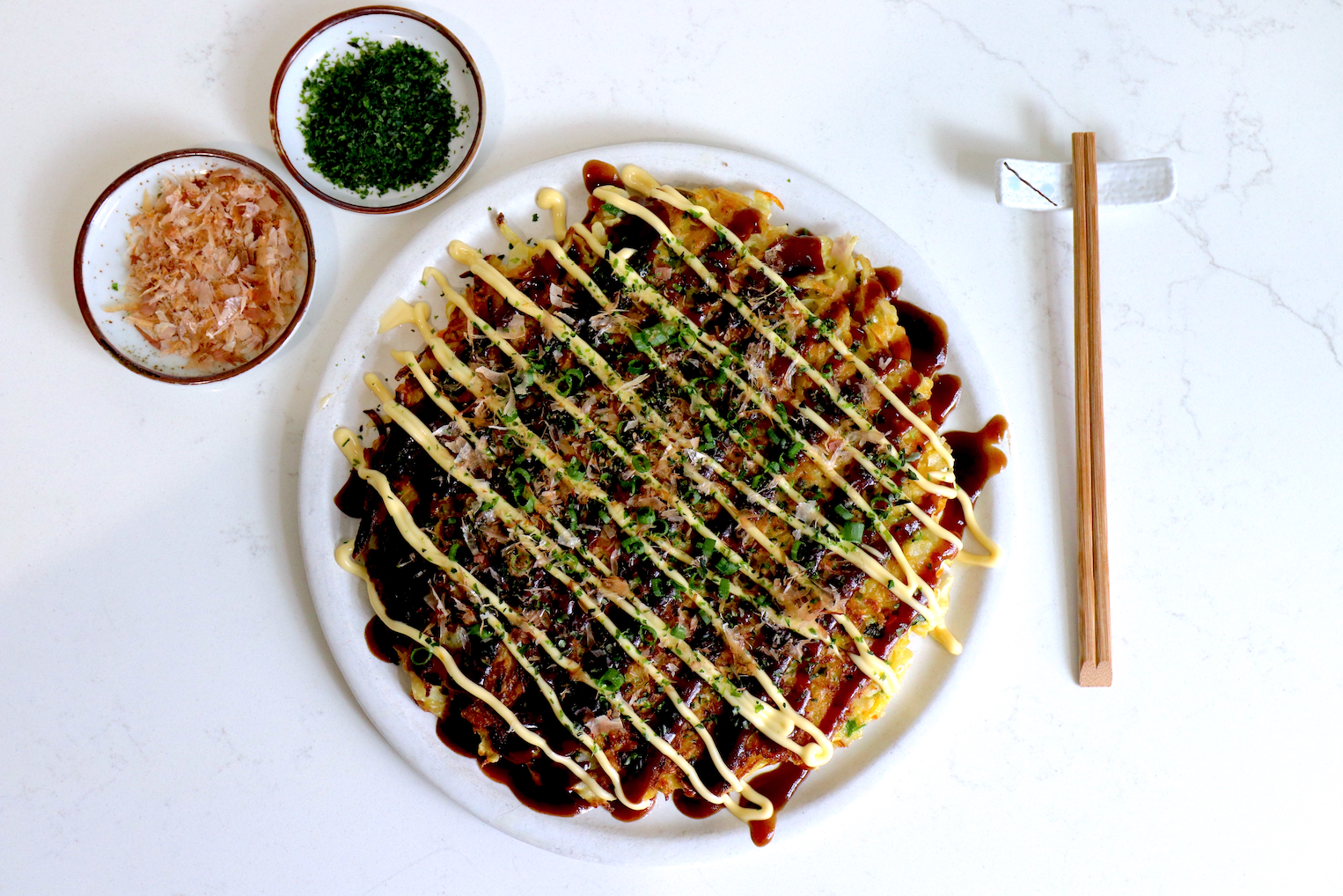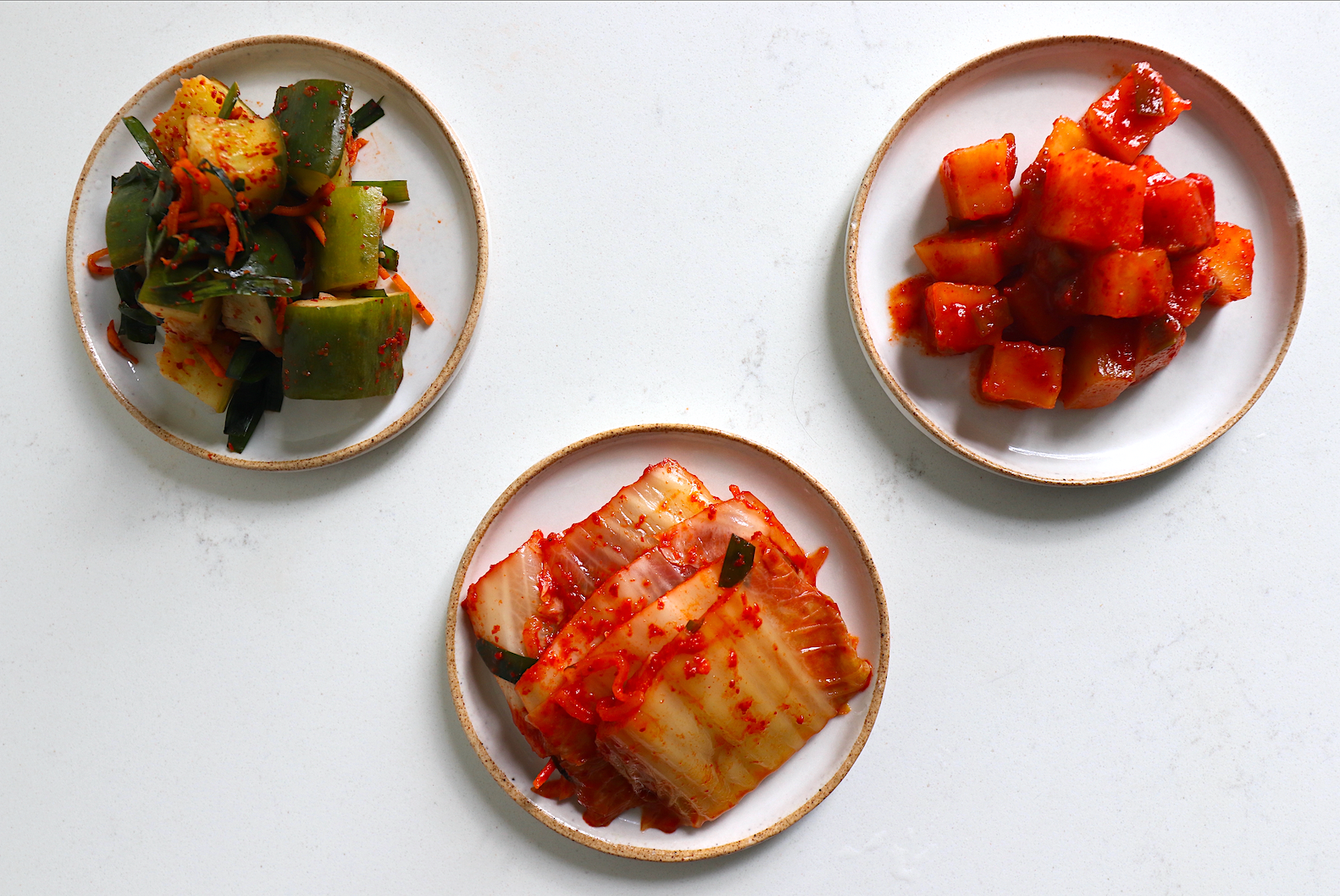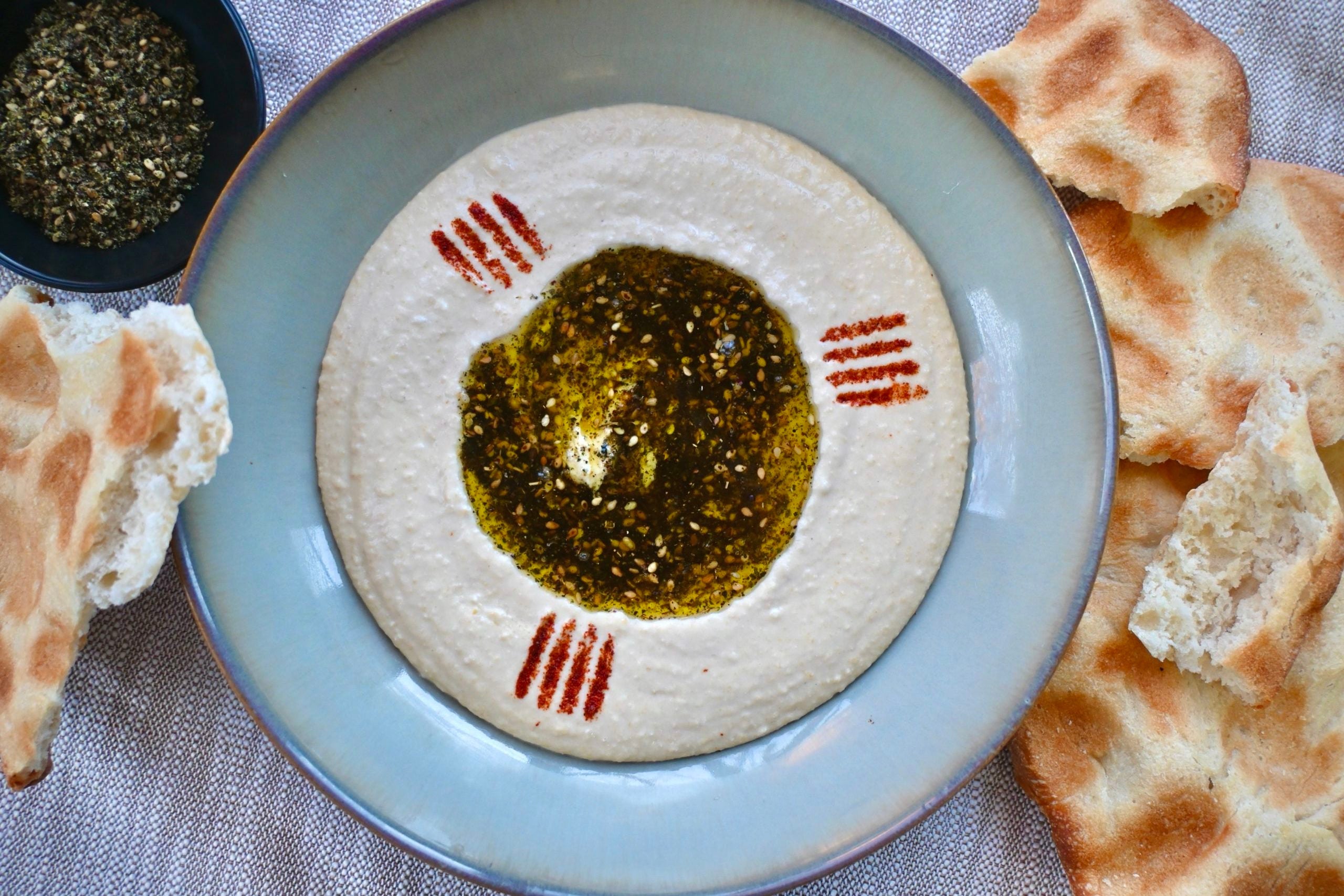
The Greatest Hummus You’ll Ever Make
By Brandon Muhawi
Senior Food Writer at Pro Home Cooks
There’s so much more to life than that red-lidded plastic container that sits on every counter of every get-together. Hummus has been popularized in the US as a fan-favorite appetizer and party snack, but it doesn’t have to be the pre-game to your dinner. Hummus is a comfort meal. Breakfast, lunch, dinner, 2:00 am, it doesn’t matter. With a drizzle of fragrant olive oil and some warm bread, you have everything necessary for a filling meal and a satisfied stomach. That’s not to say hummus isn’t delicious with various toppings and accoutrements, but I believe that when it’s made right it can stand on its own. Who knew chickpeas and tahini could go so far?
Speaking of accoutrements, hummus is a great blank canvas for flavors. It’s not rocket science as to why grocery store refrigerators are lined with dozens of hummus flavors and varieties, but at home is where you have total control over how your end product will taste. Feel free to play and experiment not only with toppings but what gets emulsified into the hummus. Fresh herbs like parsley or cilantro can give some life to the puree and dye it a vibrant green, or some roasted red peppers can add some sweetness and a lovely red-orange hue. There are endless ways to top hummus as well. Some very traditional toppings include minced lamb and toasted pine nuts, or simply some extra tahini, but use whatever you’ve got! Caramelized onions, fermented chili products, chopped olives, and roasted vegetables are all great options. This recipe won’t include any toppings (aside from a little za’atar) but serves to provide a great technique for a delicious, basic hummus. Hummus is incredibly simple, often with only 4-5 ingredients, but the way it’s made determines whether it’s smooth and luxurious or watery and gritty.

Chickpea Hummus
The method for soaking beans in this recipe is borrowed from chef and bean-lover Samin Nosrat, who discussed the best ways to cook beans on her podcast Home Cooking. The technique results in well-seasoned beans with tender skins that are delicious to be eaten in any form but works especially well for hummus where texture is extra important. Ingredients:- 200g (~1 cup) dried chickpeas
- 700ml (~3 cups) water
- ~5g (1/2 tbsp) salt
- Small pinch of baking soda
- 2 cloves of garlic (minced)
- Juice of 1 lemon
- 200ml (~1 cup) tahini
- Olive oil (to serve)
- Za’atar (to serve)

Instructions:
- Add chickpeas, water, salt, and baking soda to a container and allow to soak on the counter for a minimum of 8 hours, up to 2 days.
- When done soaking, add chickpeas and all soaking liquid to a pot and bring to a boil. Skim and discard any foam that rises to the top of the pot. Cook until the chickpeas break down and become almost jammy in texture, 1-2 hours depending on soak time.
- Allow cooked chickpeas to cool, then add to a food processor. Blend chickpeas until a smooth paste forms, ~2-3 minutes.
- Add minced garlic, lemon juice, and tahini to the food processor. Blend until hummus is homogenous, smooth, and silky. If your hummus seizes or appears to be too thick in texture, pulse the mix whilst adding ice water, a few tablespoons at a time. The cold water helps prevent the tahini from becoming bitter.
- Season to taste and serve hummus with olive oil and whatever toppings and sides you’d like, or keep in the fridge for up to 5 days.
TOP ARTICLES

Sourdough Baking School
Master the art of sourdough bread baking in the most comprehensive baking class on the internet. This class features over three hours of baking content to help you start your sourdough journey.
See More

